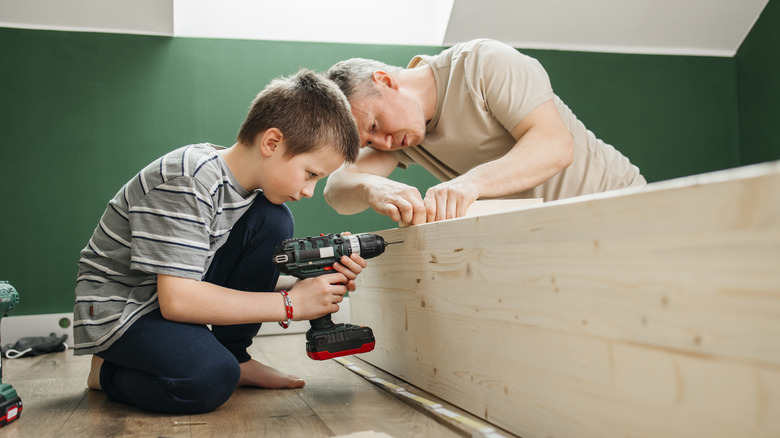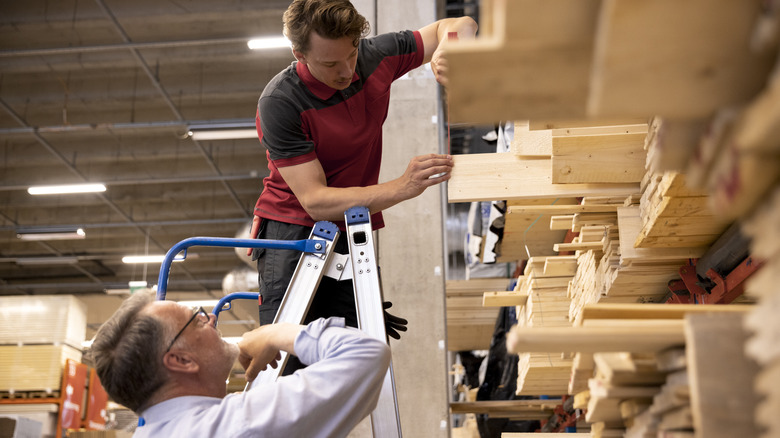Choose The Perfect Wood For Your DIY Bookshelves With These Must-Know Tips
If you're an avid reader, there might come a time when extra storage space is needed in your home or apartment for books. If you hold onto all your novels, they may mount up over time into a massive collection. And that could mean that you need to DIY a bookshelf. But before moving ahead with this project, you first need to select the proper wood for the job. To choose the perfect wood for you, our must-know tips include considering your budget, the durability and longevity of the wood type, and the wood's appearance. The answers to these questions will help you determine whether plywood, maple, oak, mahogany, walnut, red cedar, maple, or cherry is right for you. Overall, hardwoods are great options to use when building a bookcase.
When choosing the right wood for your bookcase, it may also be helpful to know some types of wood that should generally be avoided. These include pine, pine plywood, particleboard, and medium density fiberboard (MDF). Under the right amount of weight, these woods and wood products are known to bend and split. Additionally, these types of wood are soft or cheap and can easily be dinged, dented, and scratched. The result could be a bookshelf that is failing and falling apart before there's even been a chance to enjoy your project's outcome. If you've chosen to build a smaller bookshelf for a child's room, you definitely don't want to be using materials that splinter.
Tips for choosing the right wood for you
If budget is your largest concern, plywood is a solid choice. In fact, you can DIY a modern bookshelf out of a single sheet of plywood. The price of plywood can vary greatly, but it's typically pretty cheap overall. It has been used for roofing and flooring for decades and has the ability to stand up to the job of holding books and other items. However, depending on the quality of your plywood, keep in mind that it's not as durable and typically doesn't last as long as hardwood options.
Those concerned about durability and longevity have a few types of hardwood to choose from, including maple, oak, and mahogany. These types can be versatile and have a tradition of being used for furniture, cabinets, flooring, and shelves. More importantly, they can stand up to the weight needed to store heavy books without bowing, bending, or splitting. But if you're working on a tight budget, some hardwoods can be much more expensive because of their scarcity and harvesting costs.
Finally, those worried most about aesthetics may want to consider the hardwood options above or walnut, red cedar, and cherry. Each of these choices has a classic look and can be stained to fit your home's interior design style. However, keep in mind that plywood also has the ability to soak up a nice stain and hide its cheaper appearance. An interior wood stain works best for this, and the more coats that are applied, the deeper the color will appear. Here are some helpful tips to know before using wood stain.

